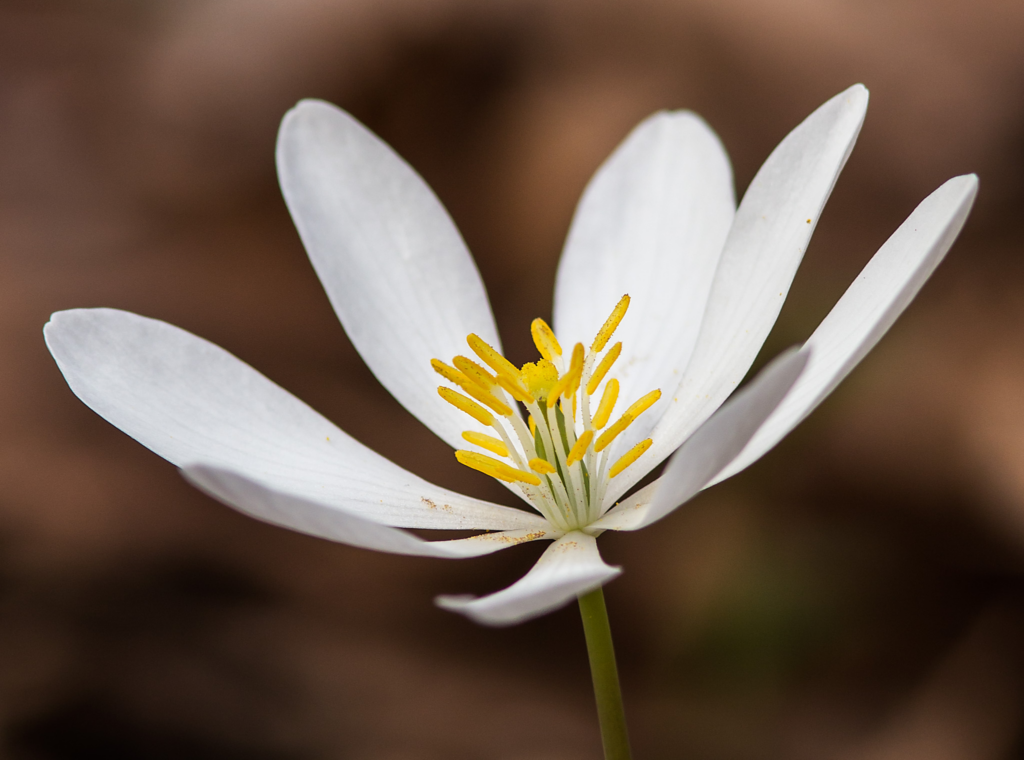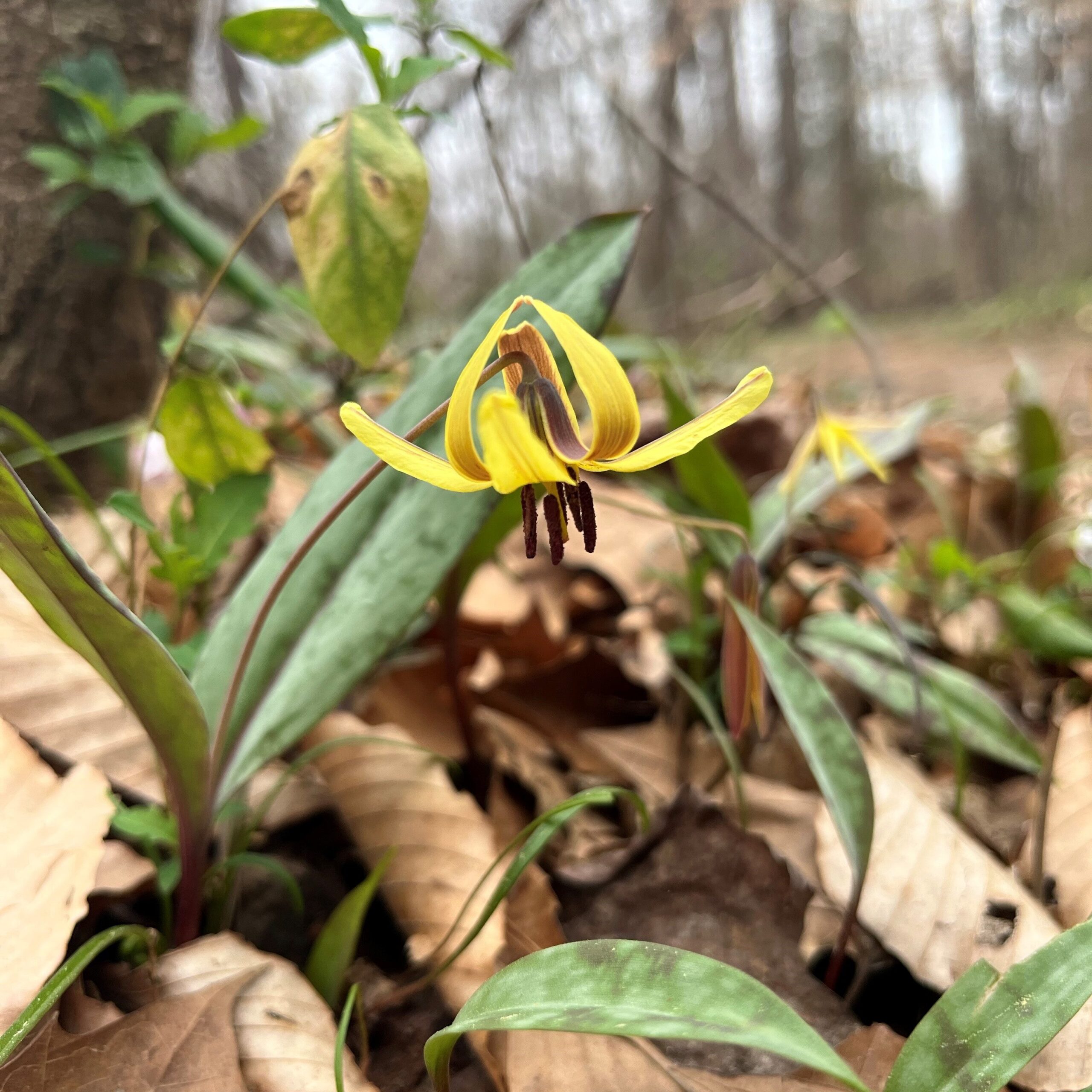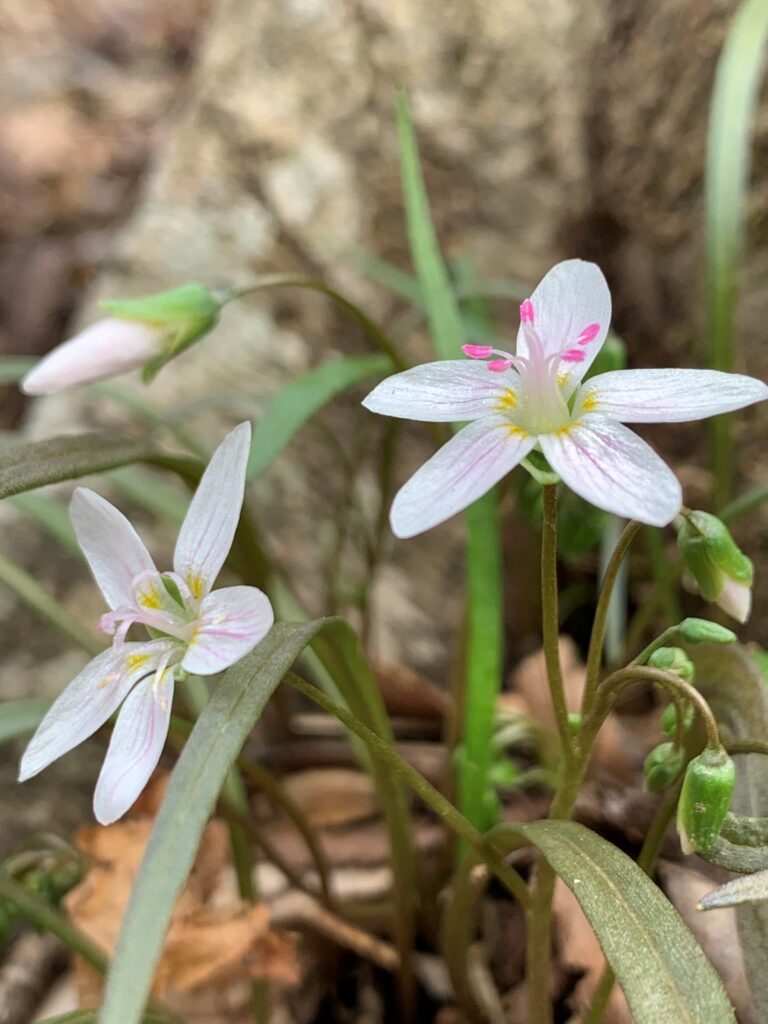By Laura Warman, Grants Manager
If you’ve been out at one of our preserves recently, chances are you may have spotted some signs of spring. The red maple (Acer rubrum) blooms have come, gone, and made way for the cheery, bright purpley-pink mist of eastern redbud (Cercis canadensis) flowers in the canopy. If you’ve paid closer attention, you might have also spotted the bright yellow flowers on sassafras (Sassafras albidum) and northern spicebush (Lindera benzoin). Other signs include leaves starting to peek out on dogwoods, and even a light yellow dusting of pollen on outdoor surfaces. It was definitely hard to miss that wave of warm days in the 70’s and 80’s (!) that arrived in late February across the Triangle. You might be thinking that, well, isn’t all this a bit early?
According to the National Phenology Network– it is! Spring has arrived early across most of the East Coast-from about 14 days early here in Durham, to over 30 days early in parts of New York. Many of us are eager to say goodbye to winter and welcome the spring, but changing weather patterns can spell trouble for creatures that depend on blooms and leaves coinciding with their waking up hungry from brumation or hibernation. Likewise, it can be a problem for migrating birds and insects. (If you want to read about a fascinating long-term study with 40 years of data linking flowers, pollinators and climate in the Colorado Rockies, check out the RMBL Phenology Project). Early springs with late frosts can also wreak havoc with crops- just ask any backyard gardener who has anguished about bringing pots back and forth into the house, or your local peach orchard. The good news is that by supporting TLC and helping us to protect land, conserve biodiversity– and to maintain the biological processes that happen in healthy ecosystems- you are contributing to efforts to slow climate change, and helping everyone in the Triangle to adapt to it.
If you haven’t gone out to our Preserves yet, this is a great time to go out and look for spring ephemerals. Ephemerals are early woodland wildflowers- some of the first to pop up in the spring- and as their name implies, they’re usually not out for long. As a group, they are important because they provide early nectar and pollen for pollinators.

Bloodroot (Sanguinaria canadensis) is one of my all time favorite ephemerals. This plant is a native relative of poppies and it likes growing in shady forest understories, from Canada south to Florida. In NC it is one of the earliest plants to emerge, and in late winter to early spring it sends out a solitary stem with a single leaf. This leaf is followed by a second stem that bears a flower bud, and the leaf often curls around the bud, protecting it. The flowers appear in March-April, they are bright white and are pollinated by insects. Curiously, the seeds have a protein-rich structure known as an elaiosome, which attracts ants, who then disperse the bloodroot seeds. The name “bloodroot” comes from the plants bright red rhizome. The rhizomes have been used for dying cloth and baskets since before European arrival to the continent.
Other ephemerals to watch out for include mayapples (Podophyllum peltatum), whose fruits are dispersed by box turtles, Spring-beauty (Claytonia virginica) whose tiny corms are edible, and trout lilies (Erythronium spp.) which grow under hardwood forests, and are important to miner bees. Keep an eye out for guided hikes and other events (like the Rare Flora Hike at White Pines Nature Preserve on April 8th), if you want to go hiking with a group and look for spring ephemerals on our trails!


